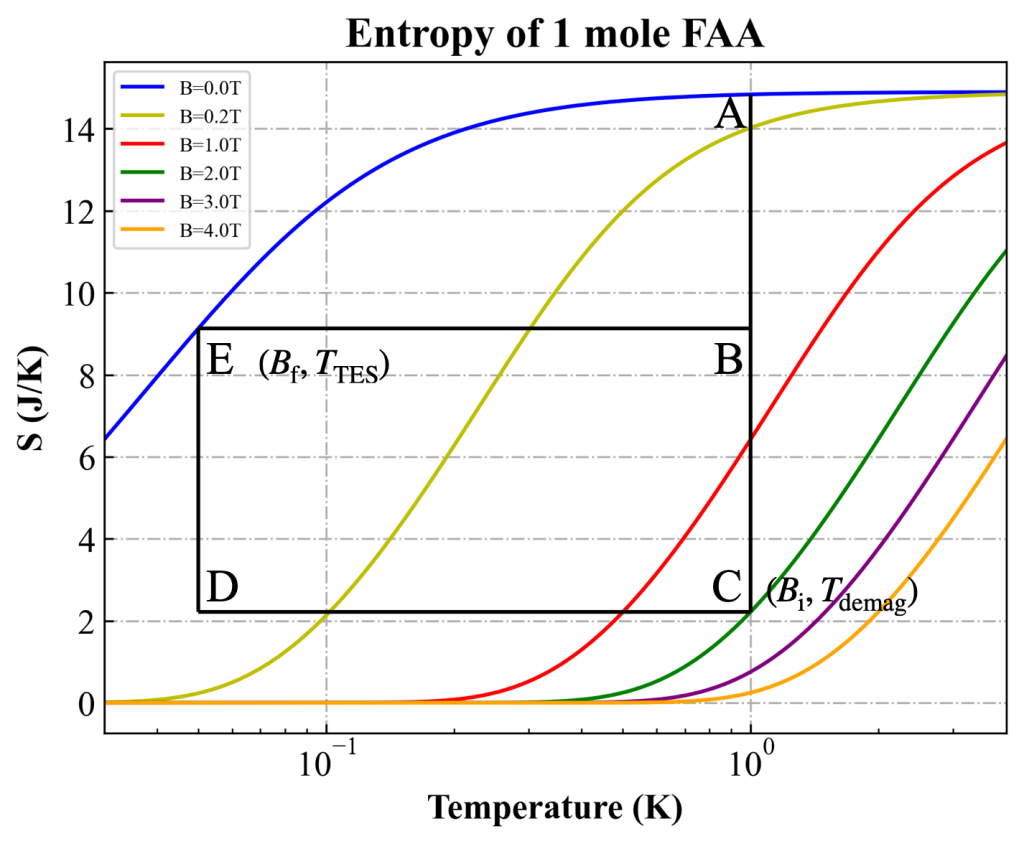Adiabatic Demagnetization Refrigerator
The detector of DIXE needs to operate stably in an extremely low-temperature environment below 100 mK, achieving such temperatures in space is particularly challenging. A two-stage adiabatic demagnetization refrigerator is responsible for cooling the detector from 4 K to the working temperature of the TES micro-calorimeter and maintaining it with less than 1 μK fluctuation for about 9 hours; the principle of a single-stage adiabatic demagnetization refrigerator is as follows: Initially, the system is in a zero magnetic field and high temperature state, the thermal switch is on, the paramagnetic salt is in thermal equilibrium with the primary cooler, the magnetic moments within the salt are randomly arranged, and the magnetic entropy is high; increasing the magnetic field (magnetization), the magnetic moments tend to align neatly under the influence of the external magnetic field, the magnetic entropy decreases, and a large amount of magnetic heat is released, causing the temperature inside the salt to rise; after a period of time, the primary cooler removes the released magnetic heat, and the paramagnetic salt temperature returns to the temperature before magnetization; disconnecting the thermal switch allows the paramagnetic salt to be in an almost adiabatic state, slowly decreasing the magnetic field (demagnetization), the magnetic moments tend to be randomly arranged again, absorbing heat from lattice vibrations, and the temperature of the paramagnetic salt decreases, this process is adiabatic demagnetization; demagnetization to the target temperature, adjusting the demagnetization rate to maintain the paramagnetic salt at the target temperature, this process is isothermal demagnetization, at which time the detector operates. Due to the unideal adiabaticity, small thermal loads continuously consume the magnetic field; when the magnetic field drops to zero, the temperature cannot be maintained, and the system needs to be remagnetized to enter the next cycle. A two-stage or multi-stage structure is beneficial for reducing thermal loads and increasing the maintenance time. This part is developed by the Low Temperature Detector Laboratory of the Department of Astronomy at Tsinghua University.


